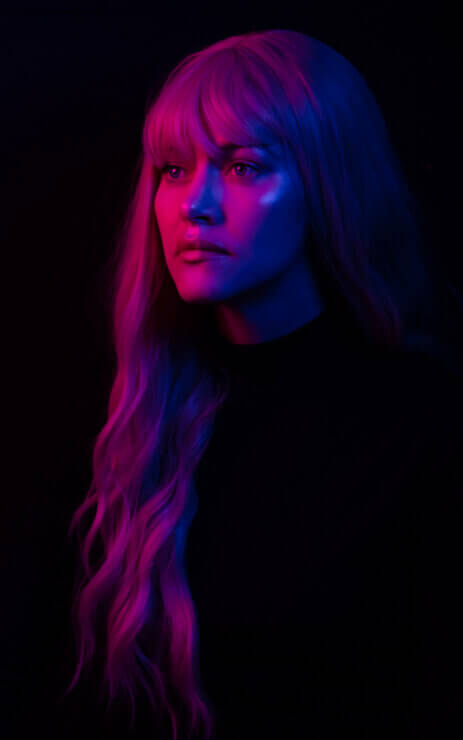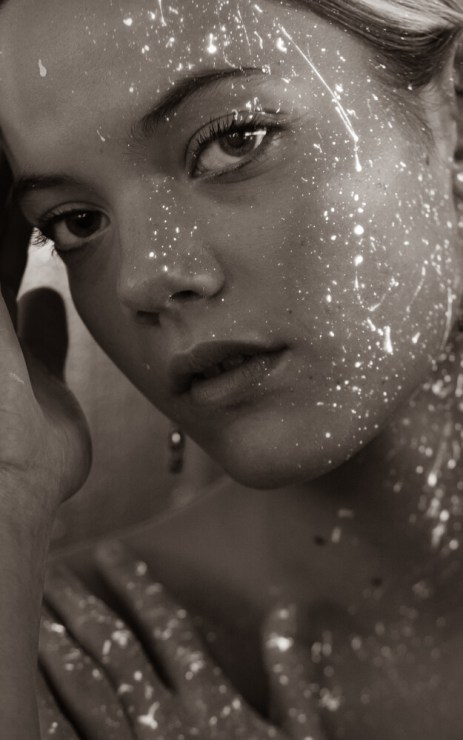That question took me by surprise when I got asked it recently. No one had ever asked me that before, and I had never really thought about it. I briefly went through a checklist in my head of what makes a photographer a “studio photographer.”
I use lights. Check. My lights have softboxes on them. I rarely shoot outdoors. So how am I not a studio photographer?

Maybe I should call myself a continuous light photographer? Or is that someone who shoots outside in the sun? So many unanswered questions!
Well, let me answer one. Here is why I love shooting with continuous lights so much.
Using continuous lighting
Continuous lighting is light that’s on all the time never flashing. These types of studio lights are similar to a house lamp. Turn the switch on and the light comes on. Turn it off and the light goes off.
There are three major types of continuous lighting bulbs: Fluorescent, tungsten and LED. There are even some continuous lights that can do multiple color temperatures.
Pros to continuous lighting

First, I can see the lighting effect with continuous lighting in real-time, making these types of lights great for beginners. Seeing the light in real-time allows me to be able to adjust my light placements and power quickly. Giving me the advantage to move quickly while on set.
Continuous lighting kits tend to be way lower in cost making my overall overhead cost more affordable to me and my client.
When shooting with continuous lights, I do not need to worry about additional remotes or triggers. Continuous lights do not require those. This saves me the frustration of having to make sure all my lights on set are firing on the same channel or syncing together.
A continuous lighting kit not only works for photography lighting but can also double if I need to shoot video. Video lighting is almost always done with continuous lighting. Making these light sources so versatile. My client can easily take some cool behind the scene images or videos without disrupting the shoot.
Cons to continuous lighting

All that said, there are a few cons when shooting with continuous lights — the main one being you have less control over your light. Meaning, you are limited on the amount of power your light puts out. You are somewhat stuck with a certain fixed light intensity. You tend to have a small range of power and very few stops of power to work with, which doesn’t always allow you the option to overpower the ambient light.
Continuous lighting kits require an outlet or a battery pack to work, making them a little more tricky to travel with.
In the world of strobes, your choice of modifiers is endless. However, with continuous lights, you don’t have the same selection. Especially as more and more continuous lighting kits are becoming panel lights.
I have noticed that some of the continuous light kits tend to overheat a bit quicker than strobes. When left on for too long or used at full power.
Continuous lights or strobe … it doesn’t matter if you love your work!
Even after all those cons I still love continuous light and I will continue to use it. I doubt that most people can actually tell the difference when looking at my work. And to be honest, I don’t think it really matters if you use continuous lights or strobe. As long as you love your work!
So yes I am a studio photographer who uses continuous lights and I AM DANG GOOD AT IT! #micdrop
My favorite go-to light is the Savage RGB Portrait Kit. This kit has been a staple in my studio for a good solid three years. Check out my initial review here.
Tell your story with the second annual Visual Storytelling Conference!
Experience four days of interactive, online training sessions featuring a range of educational content with experienced photographers and content creators. This free event kicks off with a series of technical boot camps to build essential skills, followed by live, online sessions on photography, video, business and social media. Join live from March 10-13, 2022!
